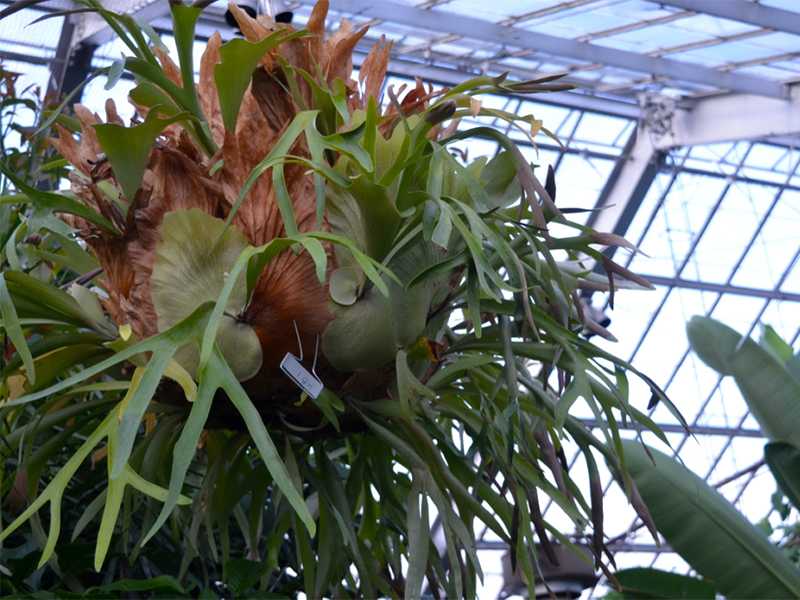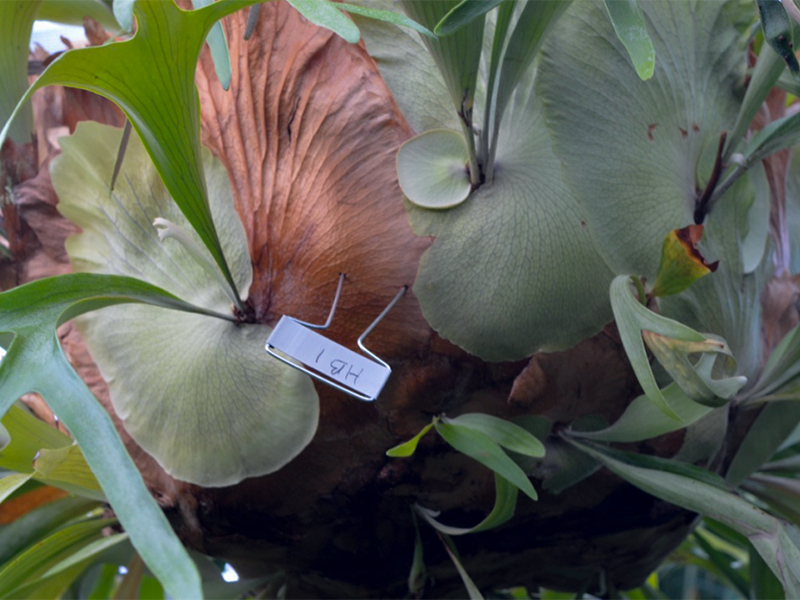| General Description | Evergreen fern that is found attached to trees in the wild, and grown for the foliage. |
| ID Characteristic | Fronds angle upwards, like the antlers of a stag. |
| Propagation | From spores. |
| Cultivation | Best grown in partial to full shade, with neutral to slightly acidic, well-drained soil. Water regularly, do not overwater and do not allow soil to dry out. Sometimes found growing attached to trees. |
| Pests | Beetles and moth larvae. Leaves will become damaged if allowed to dry out. |
| Notable Specimens | Centennial Conservatory, Thunder Bay, Ontario, Canada. |
| Bark/Stem Description | Short rhizomes, usually obscured by fronds. |
| Leaf Description | There are two types of fronds on the plant - sterile and fertile. Sterile fronds are broad, adpressed to substrate, based round to kidney-shaped, persistent, 120 to 150 cm long and 90 to 135 cm wide. Fertile fronds are drooping, usually growing in pairs of equal sizes up to 1 m long, narrowly wedge-shaped and tick at bases, broadening upward. Major veins are evident. |
| Flower Description | Non-flowering. |
| Colour Description | Fronds are green, with the sterile fronds turning brown over time. |
| Texture Description | Fronds are covered with soft, stellate hairs when young. |

